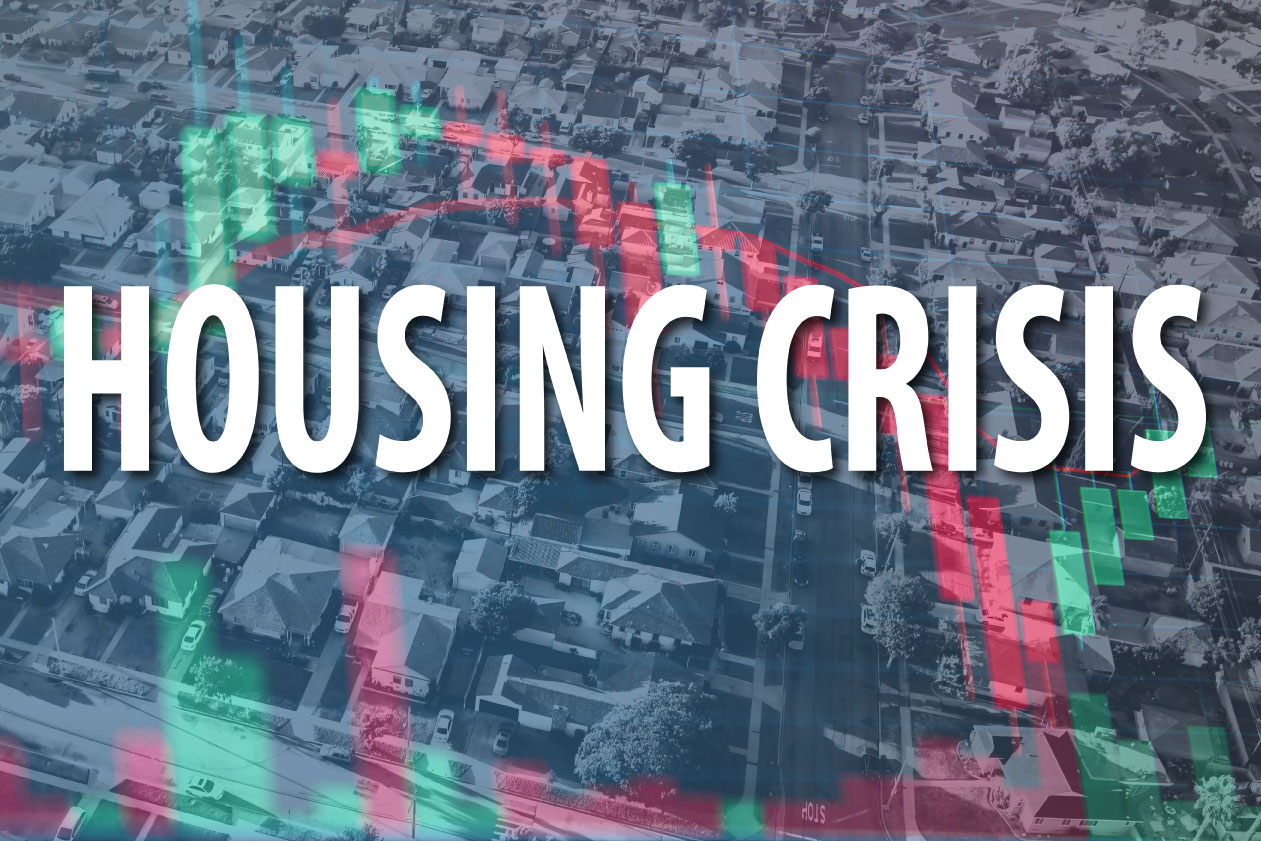Unpacking LA’s Housing Crisis: Mismanagement and Unfulfilled Promises Leave Thousands Homeless
If there is a single mantra shared by homelessness advocates, its that housing is a human right, and homelessness is fundamentally a housing problem. They say there isn’t enough affordable housing in LA (or most of the country for that matter), so rents continue to increase faster than wages. Housing meant for the homeless isn’t being built quickly enough to keep up. The majority of the City’s residential zones allow only for single family or very limited multi-family housing like ADU’s, further constricting the ability to build enough affordable housing. Certainly, there is some truth to this belief. As I wrote last year, there is a very real housing crisis in Los Angeles. But my column also noted the crises of housing and homelessness, while overlapping, are two distinct problems.
Homelessness has a variety of causes, including untreated mental illness and substance abuse, domestic violence, (especially against women), financial instability, as well and housing costs. These factors are often related: alcoholism can become progressively worse until it causes job loss, which in turn creates financial hardship. Existing mental health issues become worse the longer one is homeless, leading to chronic and service resistant homelessness. A report from the homeless advocacy group Hollywood 4wrd says the L.A. County Department of Public Health estimates 95 percent of substance abusers do not want help. The report also states about 50 percent of people with mental health issues don’t know they need help. One of the reasons Housing First has struggled as a successful approach to homelessness is because it is a “one-size-fits-all” approach that assumes housing is the sole solution, often at the expense of needed support services.
The housing crisis has an equal number of complex causes, centered around economics and housing policies. While housing costs have steadily and steeply increased, wages have not kept pace. This is why Pico-Union is one of the most densely populated areas in the nation. Families crowd into small apartments, or friends—and sometimes strangers—share sleeping space so they can split the rent. Policies demonizing single family home construction have made it increasingly difficult for young families to find homes, driving up the cost of existing houses. Laws that were supposed to create more affordable housing have resulted in little actual construction, as explained by Zelda Bronstein at 48hills.com. I highly recommend fellow CityWatch columnist Dick Platkin for his ongoing reporting of the policies keeping affordable housing out of reach of working class Angelinos. There is anecdotal evidence the City’s restrictive rental policies are driving small landlords out of the market; these smaller units are often rented at below-market rates. Corporate real estate entities buy the properties; they have the capital to leave units vacant until rents increase, or the unit is no longer subject to rent control. The result, as described by UCLA Professor Michael Storper, is that as many as 96,000 units lie vacant while nearly 46,000 people are homeless.
All of these issues contribute to a shortage of housing, both for homeless and working-class people. It may seem preposterous that spending billions on intervention programs and housing construction, combined with a blizzard of affordable housing legislation, have had no discernible results on homelessness nor affordability. But the single biggest cause for the lack of appropriate housing can be traced to a pernicious problem in state and local government: gross mismanagement.
We know the City has done a horrendous job creating new homeless housing because the City Controller has told us three times, most recently in 2022. The average cost of a unit was nearly $600,000, with one project incurring an estimated cost of $837,000 per unit. These are not detached homes; they are basic studio and one-bedroom apartments, often built with spartan amenities and low-end materials. Because of the costs and delays, the promised 10,000 new units will be closer to 8,000. Even if all 10,000 were built, it would be nowhere near enough for the 45,000 unhoused people in the city.
Because of the Westside Current’s excellent reporting, we also know the City does an equally dismal job with existing buildings, paying well over market for motels for Project Homekey, and leaving more than 40 percent of the units vacant for as long as two years. When it comes to tiny homes, the state and city have combined to make that program ineffective, bogged down in bureaucratic buck-passing.
Even if there were sufficient housing, the City has shown little ability to get people into it. According to the City’s latest performance report, through the third quarter of fiscal year 2023-24, none of the so-called Roadmap Programs, which include Project Homekey and Tiny Homes, have housed anyone despite expenditures exceeding $100 million. The disjointed relationship between the City, LAHSA, and the County often means people are lost or counted multiple times as they meander through the tortuous housing process. While the City boasts of housing thousands of people, it has actually done little more than complete “intakes”—the completion of forms—instead of ensuring people receive the housing they need. LAHSA’s service providers rack up thousands of contact hours in street outreach, with results well below 20 percent of their clients entering the housing process. The County claims it provides vital support services to people in transitional and permanent supportive housing, but abdicates the responsibility for tracking unique clients to a byzantine system involving several different departments and the Homeless Initiative, a nebulous County office that is supposed to coordinate homelessness programs, but seems to be little more than a paperwork factory.
If someone is lucky enough to find themselves housed through a City program, they may find it is scant improvement over living on the street. The LA Times recently published a story on a housing complex in South L.A. beset by horrendous conditions, including clogged toilets and rats running in the hallways. Although tenants, who are formerly homeless, filed numerous complaints with the City, nothing has been done. Interviews with various city department representatives revealed an organization mired in process over results. Employees consider their jobs done when they’ve filled out a form or referred a complaint to another department. At best, someone may generate a sharply worded letter to the property owner, while tenants live in conditions rivaling the Walled City of Kowloon.
The best the City can do is force the property owner to offer relocation assistance while the building is repaired. But this would result in committing a cardinal sin of housing advocacy; relocating someone away from their community. When they oppose transitional or interim programs like Inside Safe, advocates often cite the trauma of being moved from one’s community—the area they are used to—to a new location where they often find it difficult to reconnect to friends and services. And yet the situation at the South L.A. complex, where people have been housed as advocates insist they should be, may force them to relocate against their will.
Substandard conditions seem to be the norm at many city-funded housing buildings. A recent LA Times article details the run-down state at many Single Room Occupancy (SRO’s) hotels in DTLA. The costs of the endless cycle of damage and repair that drove the Skid Row Housing Trust to financial collapse are now being borne by the City, and most of the hotels are deteriorating at an astonishing rate. As the article states, some advocacy groups see this as purposeful neglect so the City can justify demolishing or gutting the hotels for new affordable or supportive housing, to the financial benefit of the developers coveting prime real estate.
The common theme running through the homelessness and housing narrative is government ineptitude combined with its outright refusal to hold providers accountable for outcomes. Perhaps this refusal stems from the interlocking relationship among government and nonprofit agencies. Mayor Bass serves on the LAHSA’s Board, as does Supervisor Horvath; LAHSA and the County provide services to the City. LAHSA’s CEO was a homelessness staff member early in Bass’ administration, and before that was CEO of St. Joseph’s Center, a large corporate nonprofit that receives millions in contracts from LAHSA and the City.
These types of incestuous interactions go beyond board rooms. Angela McGregor, writing in the Westside Current details the complex web of relationships in a recent lawsuit against the City brought by an organization called the L.A. Forward Institute, accusing the City of stalling a large housing development in Venice. Ostensibly filed by concerned residents, Ms. McGregor reveals the plaintiffs have close ties to Venice Community Housing, the nonprofit trying to get the project—and its millions in developer and consulting fees—approved.
If housing really is a human right, as we constantly hear from advocates, then it is hard to imagine a worse system to address homelessness than we see in LA. Process-bound, unaccountable government agencies with cozy relationships to equally unaccountable nonprofits spend billions of dollars and achieve almost nothing. The result is that thousands of people are left stranded on the streets, and those who are housed live in squalid conditions, or suffer from a lack of the services needed to keep them housed. If these agencies were truly interested in alleviating homelessness instead of defending their silos and revenue streams, maybe we’d see some actual progress.
Tim Campbell is a resident of Westchester who spent a career in the public service and managed a municipal performance audit program. He focuses on outcomes instead of process.
This article was first published on CityWatchLA.com









